All the money in the world
Every realm has its great rivalry. Leafs versus Habs. Beatles or Stones. DC against Marvel. In the annals of bank note design, there’s no showdown like Canada versus Kazakhstan. It began in 2011, when both countries were nominated for the Bank Note of the Year Award—the Olympics of paper money, administered by the International Bank Note Society (IBNS). Kazakhstan’s 10,000-tenge note, a pale violet sheet of birds, buildings and monuments, defeated Canada’s golden $100 bill. Then it happened again—twice. In both 2012 and 2013, as Canada released its new polymer series note by note, the Kazakhs eked out slim victories over the runner-up Canucks. It was cash’s equivalent to Usain Bolt’s 100-metre-dash threepeat, only without the conciliatory silver medals.
Not that Canada is without monetary bragging rights. In 2004, the Canadian $20 bill—featuring the Queen and Bill Reid’s Indigenous artwork—won the first-ever Bank Note of the Year Award. Every year since, the 2,000 members of the worldwide society—a self-selecting club of currency enthusiasts—have nominated and voted for their favourite notes, judging for aesthetics and security.
Every year the International Bank Note Society crowns a Bank Note of the Year winner. Did Canada ever win? Watch the video to find out.
It doesn’t matter what the bill is worth or how many people use it, allowing for obscure entries like the Faroese 1,000-krónur note to trump the Scottish fiver, as it did in 2005.
By keeping tabs on the world’s best bank notes, the IBNS has effectively catalogued the rapid evolution of paper money in the 21st century. Whereas in the 1900s the Bank of Canada issued new notes to great fanfare every 15 years or so, fresh bills now arrive in our wallets on the regular—in fact, since 2001, there have been more years in which Canada issued a new note than years it didn’t.
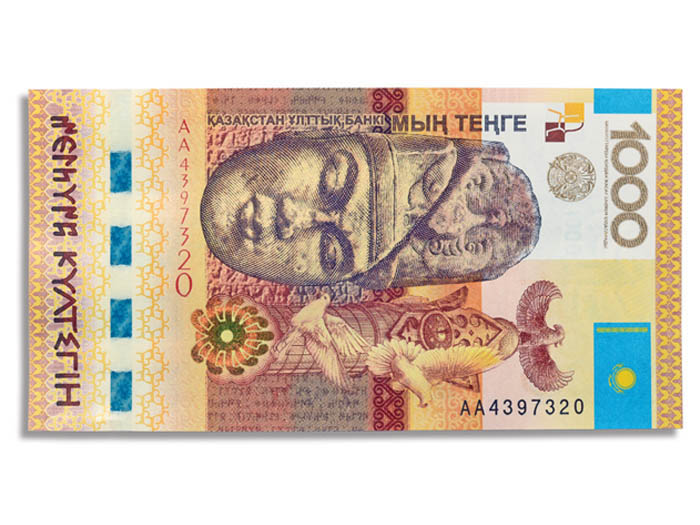 Kazakhstan’s 1,000 tenge note was the 2013 winner and features the Kazakh flag
Kazakhstan’s 1,000 tenge note was the 2013 winner and features the Kazakh flag
That’s primarily in the name of security. What better way to outwit counterfeiters than to swap in a new design as soon as they figure out the old one? “Since bank notes began, the counterfeiters were right behind,” says Dennis Lutz, president of the IBNS. “It’s been a constant job to outthink them, because they’re good.” Inspect a modern note and you’ll find plenty of elements designed to stump them: textures, watermarks, colour-changing holograms and, should you happen to have an ultraviolet or infrared light handy, stray flecks and hidden figures.
Modern bank notes are prettier, too. The Federal Reserve may have missed the memo, but the days of staid presidents printed on cotton are over. Waterfalls, gorillas and rugby players are the new Benjamins. “I don’t think the Canadian note that won in 2004 would even place today,” says Lutz. “It didn’t have the pizzazz.” Every year, he adds, the designs get more sophisticated, and the voting gets closer. “Who knows what they’re working on now?”
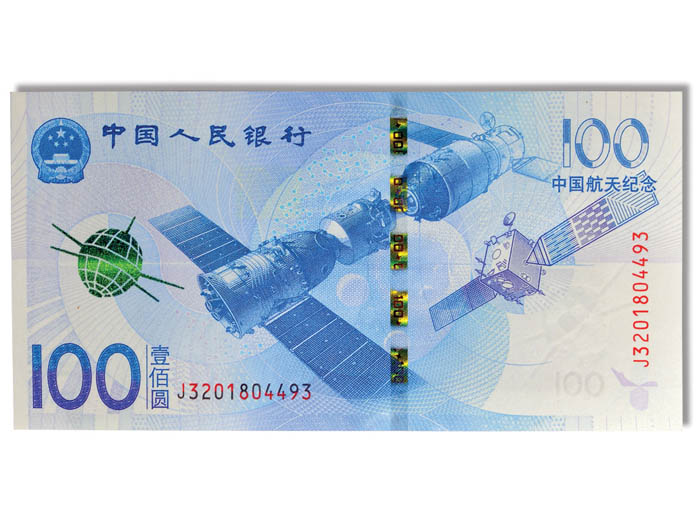 China’s 100 yuan bill depicts the docking of two Chinese vessels and was a 2015 finalist
China’s 100 yuan bill depicts the docking of two Chinese vessels and was a 2015 finalist
Printed money wasn’t always so glamorous. Its origins trace back to the Tang Dynasty in China (618-907 CE), but when Emperor Chen-tsung introduced the first universal bank notes—an IOU for a set number of coins—about 1,000 years ago, some merchants refused to accept them. Sweden caught on to the idea in 1661, when it issued Europe’s first notes, each hand-signed by at least 16 officials to guarantee their legitimacy and prevent reproduction. At first, cities, banks and other institutions with printing presses could issue their own money, the value of which depended more on the group’s reputation than the number printed on its bills. Eventually, state banks standardized currency, monopolizing the creation of notes and ensuring they would be recognized at face value. Bills proliferated during the industrial revolution to accommodate a growing number of financial transactions, and eventually began appearing in increasing denominations—the U.K. famously printed a series of £1-million notes for internal bank use in 1948.
About 32 years later, Lutz started collecting legal tender and, in the early 2000s, joined the IBNS. Dedicated notaphilists, as they’re called, regularly travel to Valkenburg, Netherlands, home of the world’s largest paper money expo, in search of rare specimens. It can be an expensive hobby—there’s no getting around the fact that a high-value note is, well, high value—and a dangerous one: a handful of dealers were recently imprisoned when they tried to take notes illegally out of the African island nation of São Tomé and Príncipe.
“People use paper money every day, but they don’t know anything about it,” says Lutz, a 71-year-old physician from North Dakota. “You can determine the entire financial history of a country if you study its money.” A nation’s heroes, values, financial booms and busts—they’re all there in the faces, symbols and numbers. Among Bank Note of the Year judges, he says, uncluttered designs, vibrant colours, flora and fauna are in; politicians—especially the Queen—are out. “It isn’t that people don’t like them, they’ve just seen it before,” he says. “There have been more than 30 different images of Queen Elizabeth on bank notes during her reign.”
Of course, taste is subjective. A bright, bold note to one person may be a gauche, undignified mess to another. Despite their individual flourishes, bills look fundamentally similar because consistency denotes reliability. You can only inject so much razzle-dazzle before they start to look like Monopoly money, as Australia learned in 2016. Despite the fact that its $5 bill was a Bank Note of the Year finalist, Aussies panned its purple, yellow and magenta colour scheme, comparing it on Twitter to “clown puke” and germs in a petri dish.
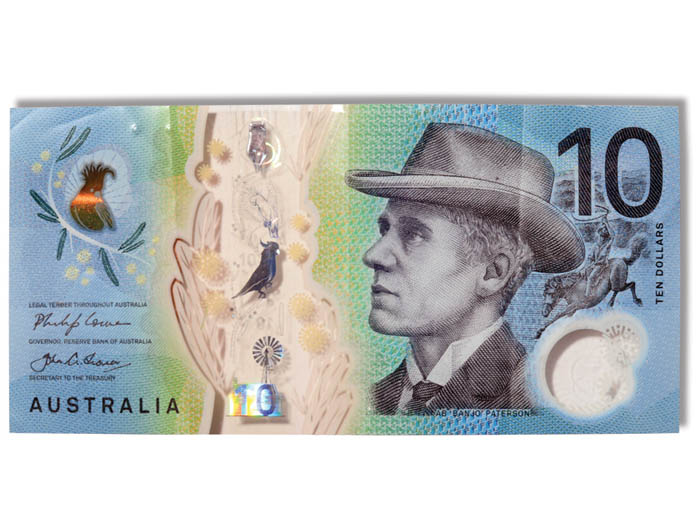 A 2017 finalist, Australia’s $10 note features two historical figures
A 2017 finalist, Australia’s $10 note features two historical figures
Other notes have courted controversy for their geopolitics (Ukrainians weren’t fans of a recent Russian bill that featured a map of annexed Crimea) or their chemical composition (in 2016, vegans and religious groups unsuccessfully petitioned the Bank of England to stop using trace amounts of tallow in the printing process). During public consultations on Canada’s current $20 bill, focus groups worried the Vimy memorial looked too much like the Twin Towers, that it was too “pornographic” or that it was a Conservative plot to glorify war. “People can read almost anything into any note,” says Lutz.
In other words, when you’re trying to capture the spirit of an entire nation in a six-inch slip of paper, someone is always going to be offended. Try to take Alexander Hamilton off the American $10 bill and Lin-Manuel Miranda fans lose it. Try to put Harriet Tubman on the 20 and the alt-right cries political correctness. The U.S., for its part, has had just one of its monochrome bank notes nominated since the contest began: the 2013 edition of the $100 bill. “It had almost no votes,” says Lutz. “It might be the most respected currency in the financial world, but in terms of being beautiful, it’s just another greenback.”
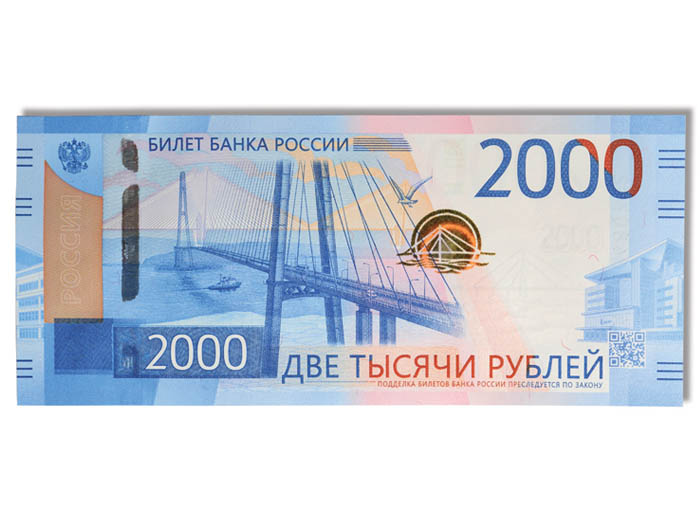 Russia’s 2,000 rubles note was a 2017 finalist and features a QR code
Russia’s 2,000 rubles note was a 2017 finalist and features a QR code
Switzerland, meanwhile, is on a winning streak. The country earned back-to-back victories for 2016 and 2017. The latest champion, the 10-franc note, is one only the Swiss could produce—an ode to punctuality that depicts the inner workings of a watch, an orchestra conductor’s hands, hundreds of tiny clocks, a sparkling globe sliced into time zones and maps of the national rail network. It’s printed on Durasafe substrate, a custom combination of polymer and cotton that’s hard to duplicate, and has countless anti-counterfeiting measures: Swiss crosses hide in every corner, perforations appear in the light, embossed strips pockmark the edge. “We had to remove some security features because it was too complex,” says Beat Grossenbacher, head of cash at the Swiss National Bank. “The security features make counterfeiters’ lives difficult. It keeps a big distance between the original bank notes and the fake ones.”
The winning Swiss notes have a turbulent history. The bank held a design competition back in 2005, selected a winning artist and spent years finessing the look and security of its new series, only to run into major delays, including a misprinting that forced the bank to shred and burn an early batch of francs in 2012. Ultimately, it took the bank 11 years to introduce the first note of the new series, the 50 franc. Grossenbacher finally found out it won the Bank Note of the Year Award while reading the news online. “It made us proud,” he says. “Even if it took a long time.”
Such painstaking processes may not be necessary for much longer. Sweden, the birthplace of European paper money, is now on track to become the world’s first cashless society thanks to the wide adoption of bankcards and mobile payments. In a 2018 Riksbank survey, only 13 per cent of Swedes said they’d used cash in their most recent purchase, down from 23 per cent in 2014. (By comparison, 44 per cent of Canadian transactions involved cash in 2013, down from 54 per cent in 2009.) The Swedish Riksbank expects the printed krona to disappear by the 2030s.
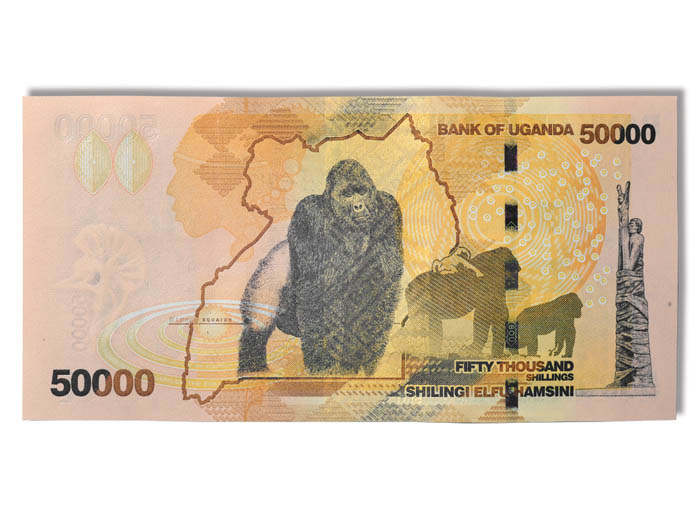 Uganda’s most valuable banknote, this 50,000 shillings bill was a winner in 2010
Uganda’s most valuable banknote, this 50,000 shillings bill was a winner in 2010
Lutz contends that rumours of cash’s demise are greatly exaggerated. “It’s ironic that Sweden”—with all its cash-free decrees—“has redesigned its currency in the past three years,” he says. He points to Britain, where the amount of physical cash in circulation surged last year, and to dense, developing countries like China and India, where it’s still commonplace to hoard high-denomination notes instead of dumping them into a savings account. “There are too many uses for cash,” he says. That includes illegal business. “I don’t think anyone believes it’s going to disappear in our lifetime.”
Canada may be Switzerland’s stiffest competition for the next Bank Note of the Year Award, which will be given in spring 2019. Two years ago, Justin Trudeau announced the Bank of Canada would put an iconic woman (who’s not the Queen) on a bank note alone for the first time. From more than 26,000 public submissions, the bank formed a short list of five candidates, including track-and-field runner Bobbie Rosenfeld and Quebec suffragette Idola Saint-Jean. Finance Minister Bill Morneau, who had the deciding vote, ultimately chose Viola Desmond, who became a civil-rights hero after she fought segregation at a Nova Scotia movie theatre in 1946.
Desmond gave the bank note its central themes: human rights and social justice. “How could we make that really come alive on a bank note?” says Boyd Laanstra, senior analyst of visual content at the Bank of Canada. “We needed to choose images that looked fantastic but also reflected Canada.” With input from community leaders, First Nations elders and many others, Laanstra and his team selected the ultra-Canuck elements that would accompany Desmond: the Canadian Museum for Human Rights, a passage from the Canadian Charter of Rights and Freedoms and the vaulted dome ceiling of the Library of Parliament. The symbols double as a bulwark against counterfeiters: the kinegram ceiling reflects the colours of the rainbow, while an eagle feather shifts from green to gold. “When the content and the security work well together on a bank note,” says Laanstra, “that’s when the magic happens.”
The note, which will enter circulation this fall, was the first nominated for the 2018 Bank Note of the Year Award. Your move, Kazakhstan.